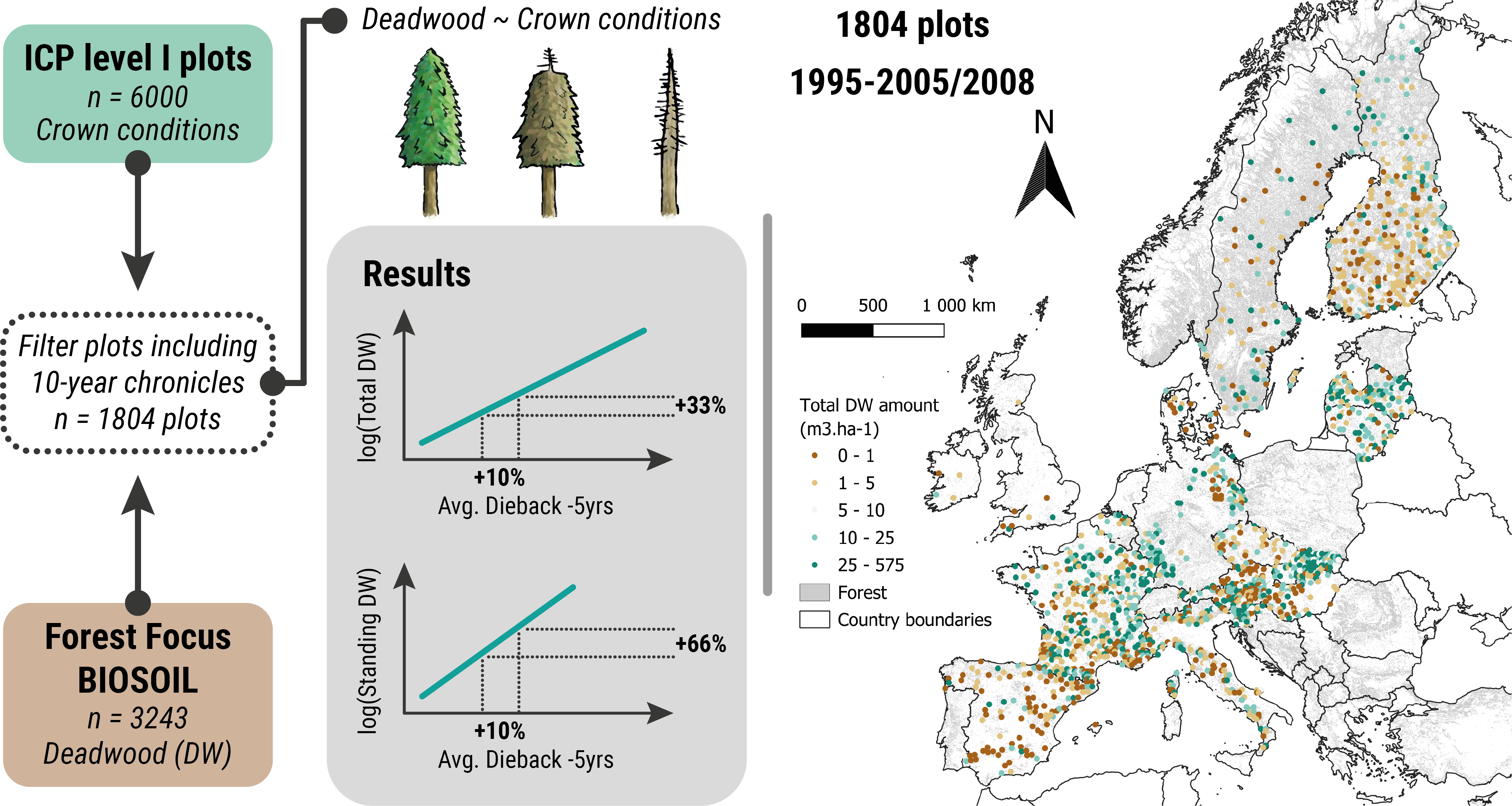Effects of forest dieback on deadwood patterns: Large scale trends from a cross-analysis of European databases
Published in Journal of Environmental Management, 2025
Abstract:
Despite its importance as a key element for forest biodiversity and ecosystem functioning, uncertainties remain on how deadwood may change due to increasing forest dieback and subsequent management. The opportunistic cross-analysis of two large-scale, never-before-crossed forest databases, based on the spatially representative 16 × 16 km European grid, provided a dataset of 1804 plots in 17 countries with 10-year time series of annual measurements of tree defoliation followed by punctual assessment of deadwood volumes. Generalized linear mixed models and magnitude analyses quantified the relative influence of site environmental factors and 16 metrics of the current, recent and mid-term dynamics of local decline severity on plot-level deadwood volumes across European forests. The average level of dieback over the last five years and, to a lesser extent, the time elapsed since the last peak defoliation, were more important for deadwood stocks than were older levels of defoliation, the intensity or the frequency of extreme past declines. In Europe overall, total deadwood volume was 33% higher when the average level of decline over the previous five years increased by 10%. The significance and magnitude of the effects of past defoliation on deadwood were stronger in lowland forests than in upland forests, in coniferous forests than in broadleaf forests, in young stands than in mature stands, and for standing deadwood than for total deadwood, and varied with management. Retaining small, declining patches, excluded from salvage or sanitary logging within managed forests, could be an integrative opportunistic forestry tool for spontaneous restoration of deadwood.
Graphical abstract:

